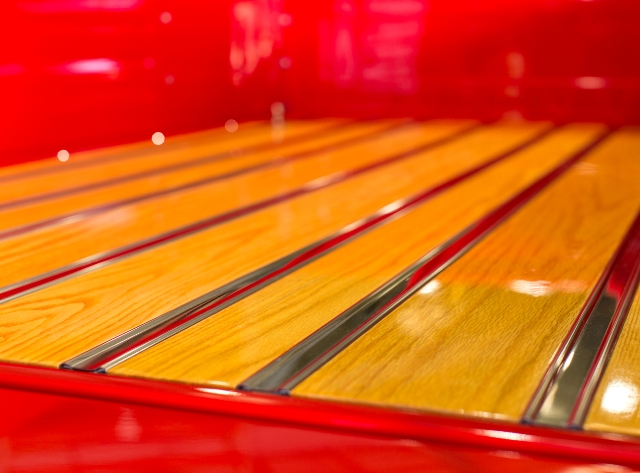
Exhaust heat shields manufactured from stainless steel or electrogalvanized steel can be used to protect your truck bed from the heat generated from your exhaust system.
Our friends at MAR-K—makers of restoration and restyling truck parts for old Ford, Dodge, and Chevy/GMC trucks—say that you can use one or two layers of heat shield depending on the style of exhaust system your truck may have.
Wood floors particularly can be vulnerable to exhaust system heat damage, and properly installed heat shields can protect your truck bed. The heat shield protects the wood where the exhaust pipes bend up and over the rear axle housing close to the truck bed floor.
Here are MAR-K’s recommended instruction for installing exhaust heat shield in your truck.
1. Place the exhaust heat shield directly over the pipe at the point where the pipe comes closest to the wood boards’ bottom surface. It may fit on one individual board or may need to fit onto two boards side by side. Place the heat shield with the open area pointing toward the front and rear of the truck so that air may flow under it between the wood and heat shield.
2. Mark the wood board or boards through the exhaust heat shields holes. Make sure the hole locations are greater than 3/4″ from the edge of any of the wood boards. Any closer than this and you may drill into a bed strip groove which will not be the full board thickness.
3. Drill at the marked locations with a 1/8″ drill bit. The holes should not be more than 3/8″ deep. Use a drill stop if necessary to prevent drilling completely through the wood board.
4. If using the electro-galvanized heat shields, paint them before installing. If using the stainless steel heat shields, remove the protective tape from the surface.
5. Install the heat shield with screws provided. As you install these screws, you may wish to seal the holes in the wood with a wood sealer or some water-tight sealer to prevent the wood from rotting.

Great tips. I’ll try to install heat shields on my truck bed. Thanks a lot!